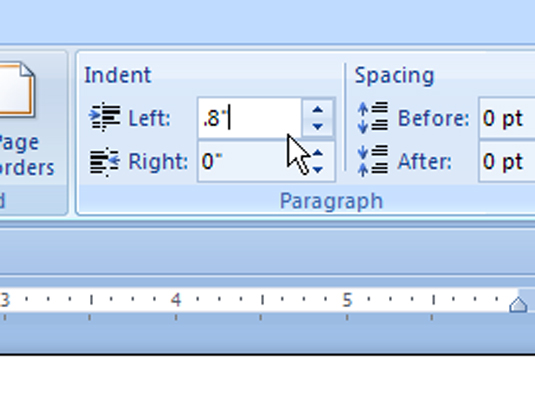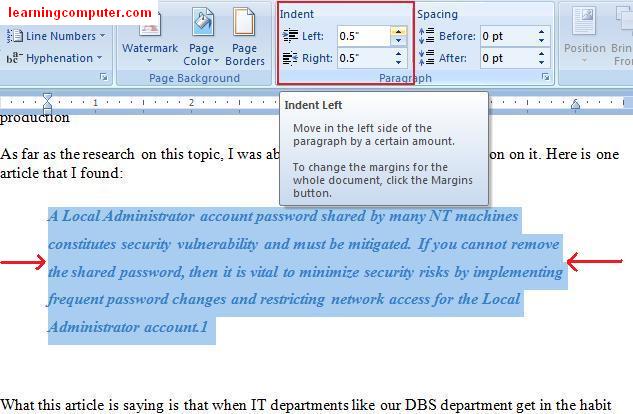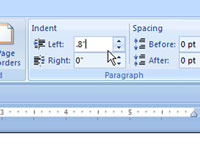
#Indent left and right margin in word professional#
The first thing a professional typesetter does with your manuscript is convert all instances of “space-space” to single spaces, over and over until there are no double-spaces left in your document. Formatting choices are not written in red ink in the margins they’re embedded in the document. Sometimes, when budgets are tight, the word processor is the typesetting engine. But in the electronic realm, your word processor document is imported directly into a typesetting application. Flaws in the original document, line spacing, typefaces-none of these typewritten attributes survived the layout process. The difference? In the old days, your typed manuscript was whited out, penciled in, annotated, and finally sent off to be retyped into a linotype machine or similar typesetting device. And yet, the old habit of repeatedly hammering the space bar to position elements on the page persists-even to a point where centered elements are sometimes left-aligned text preceded by dozens of spaces. In the digital world, the convention is to use the point size of the typeface, so if you’re setting 12-point type, your indent would be 12/72-inches or 1/6-inch). And though a half-inch paragraph indent (along with double line spacing) is perfectly suitable for manuscript work, the typesetter’s convention has long been to use an indent of one em (the width of a letter “m” in the analog world. Though the “two spaces after a period” convention was not descended from the typewriter as is popularly thought, consecutive spaces are generally considered bad practice in the digital world. When producing a paragraph indent on a typewriter, it makes no difference whether you hit the tab key or type a few consecutive spaces, but on a word processor, those approaches create problems as your manuscript moves from editing to final page layout.

Understanding the simple and elegant split ruler and tab functions opens up a world of formatting opportunities.ĭigital typesetting and word processing inherited a number of outdated conventions from the typewriter. appendices: Appendix labels and titles should be centered (and bold).This article explains the tab ruler found on every word processor and typesetting application.reference list: Reference list entries should have a hanging indent of 0.5 in.

tables and figures: Table and figure numbers (in bold), titles (in italics), and notes should be flush left.Level 4 and 5 headings are indented like regular paragraphs. headings: Level 1 headings should be centered (and in bold), and Level 2 and 3 headings should be left-aligned (and in bold or bold italic, respectively).If the block quotation spans more than one paragraph, the first line of the second and any subsequent paragraphs of the block quotation should be indented another 0.5 in., such that those first lines are indented a total of 1 in. block quotations: Indent a whole block quotation 0.5 in.abstract: The first line of the abstract should be flush left (not indented).section labels: Section labels (e.g., “Abstract,” “References”) should be centered (and bold).

For student papers, the title (in bold), byline, affiliations, course number and name, instructor, and assignment due date should be centered on the title page.


 0 kommentar(er)
0 kommentar(er)
